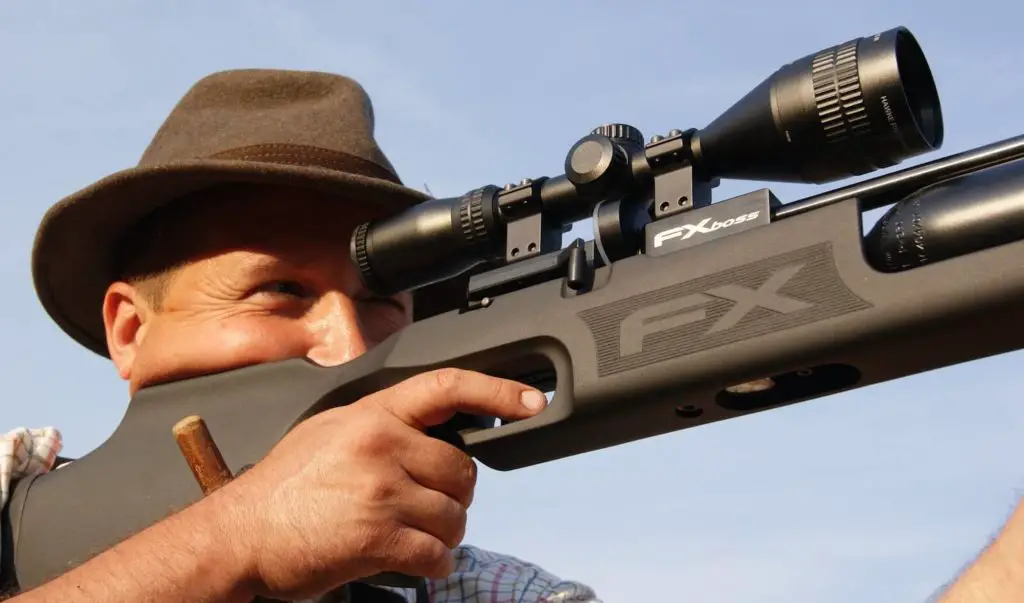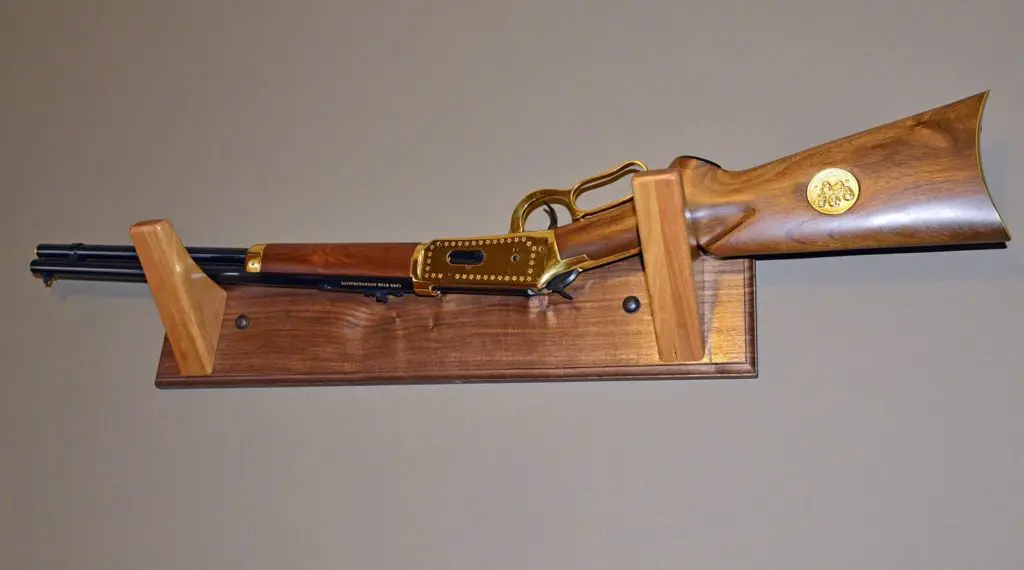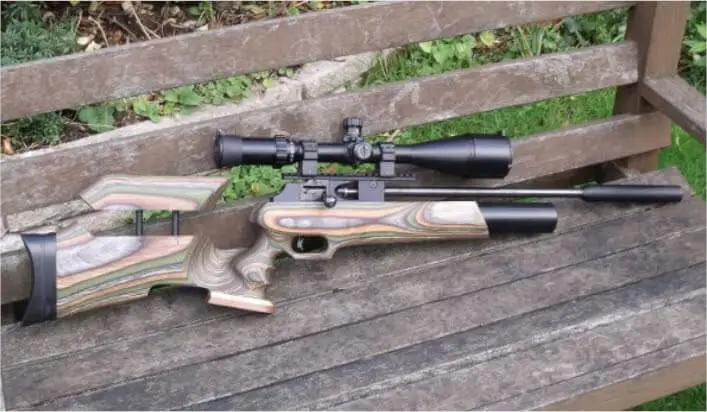I understand that you’re here to get some quick facts on synthetic vs wood stocks
Probably to guide your purchase.
Quick alert – the debate has been raging on for longer than you can probably imagine.
Perhaps it started with the push and pull between the brunette and the blonde.
Are you aware of the differences between the two? Here are a few interesting facts:
Table of Contents
- Facts about blondes
- Facts about brunettes
- What you should know before buying synthetic / wood stock?
- What is synthetic stock?
- What is wood stock?
- Synthetic vs Wood: Accuracy
- Synthetic vs wood: Recoil
- Synthetic vs wood: Weight
- Synthetic or wood rifles
- Synthetic vs wood: Durability
- Synthetic vs Wood looks
- Final Verdict
Facts about blondes

- Have more fun
- Are more approachable
- Get offered more help
- Research shows they earn roughly 7% more than brunettes
- Blonde waitresses earn more tips
- Perceived as more attractive
Facts about brunettes

- They are perceived as more worldly and mature
- They are perceived as more intelligent
- They are viewed as marriage material
- They are believed to be more self-sufficient
- They are perceived as more serious
- They are perceived as less approachable
Huh?
Just in case we are still not on the same page, brunettes represent the synthetic stocks while the blondes stand for wooden stocks.
Which one wins?
Stay with me as I disclose the pros and cons of these two variations of air rifle stocks!
There are a few things you need to understand first.
What you should know before buying synthetic / wood stock?
The first thing that meets the eye whenever you go shopping for an air rifle is stock.
You see, if the stock is not right, to begin with, you will never enjoy the full potential of the gun, no matter how powerful and accurate it is rated.
Jim Chapman of Airguns of Arizona shared exactly what he does when buying air rifles.
“I’ll hold the rifle and look at it while getting the feel, place my face against the comb to get an idea of how the gun will hold when I have a scope mounted.”

Furthermore, he says:
“I’ll grip the pistol grip to see if it fits comfortably and cradle it in my arms to see how it will carry.”
The very essence of this is to evaluate the quality and usability of the gun.
The stock definitely makes the larger bulk of the gun and therefore must be assessed carefully.
The design of the stock depends on what material is used to make the stock.
The two main materials used for the stock are wood and polymer.
The rest of the gun is usually made of metal.
This metal part may or may not be incorporated into the stock.
One major factor the manufacturers take into consideration when designing air rifle stocks is how the air rifle will feel in the hands of the shooters.
It must be comfortable since it is the part you hold as you aim at the target and fire.

Your cheek rests on the stock while shooting.
Coupled with the action of the hands, you are able to stabilize your gun for an accurate shot.
The stock enables you to handle even the longer varieties.
Additionally, the stock of the airgun helps absorb some of the aftershocks generated after shooting the high-powered airguns.
This is of course in addition to the butt pad, normally made of rubber or plastic.
Let us now delve deeper into the main types of stocks in regard to the materials used to make them.
What is synthetic stock?
The invention of synthetic materials revolutionized the manufacturing industry, not only the airgun industry.
Chemists have been on a continuous journey to join small molecules for the production of long polymer chains that have better characteristics.
In addition, material specialists and engineers have come up with new processing methods and technologies to better the characteristics of materials.
Durability is at the heart of these inventions.
The desire to produce goods that last for a long time has never waned.
Additionally, the world is championing materials and technologies that are sustainable, more energy-efficient, and capable of reducing pollution.
In this sense, airgun manufacturers hopped onto the bandwagon of synthetics.
Over the last 20 years or so, the airgun industry has seen a deep influx of synthetic stocks.
However, the first synthetic stock emerged onto the market back in the mid-1960s.
The company brown Precision started using fiberglass to produce airgun stocks.
Further on, around 1980, Weatherby came up with the Fibermark.
This was the very first factory rifle with a synthetic stock.
From that time, many other manufacturers joined the movement and have been producing air rifles with synthetic stocks.
Initially, synthetic stocks were simply made of hand-laid fiberglass.
Technology has seen to it the introduction of other materials such as Kevlar, graphite, boron, and urethane, among many others.
Before synthetics became famous, wood was the material of choice in making air rifle stocks.
What is wood stock?
The very term stock is a German word for the tree trunk.
The name dates way back to 1571 when hunters started hunting with rifles.
The version of the rifle used then was known as the hand cannon.
The handle was a simple stick fixed into a kind of socket in the breech.
From this earliest version, the wooden stock has greatly evolved in shape and structure as manufacturers continue to make better airguns.
Right now, walnut is the most popular wood type for air rifle stocks.
Other types of wood commonly used include myrtle, birch, maple, and mesquite.
The choice of wood for use in airgun stocks is a very sensitive issue.
Not every timber can be carved into a gunstock.
The natural properties of the wood must first be considered.
First of all, the pattern of the grain of the wood is very important as it determines how strong the wood is.
The grain pattern also leads to desirable features such as crotch figure, fiddle back, feathering, and burl.
The more beautiful the stock is, the higher the airgun prices can be.
Having known the two most popular types of stocks as regards the material used in making them, it is time now to get deeper into the performance aspects of synthetic and wood stocks.
Synthetic vs Wood: Accuracy
One hunter shares his experience with a wood stock rifle in this Hunt Talk thread.
After spending lots of money on an excellent pre-64 Winchester model 70, the barrel is free-floated in its original walnut stock.
Upon going on an elk hunting trip, it happened to snow and rain a lot.
The result was the walnut stock swelling and completely throwing off the accuracy of the rifle as the barrel moved about.
He finally had to borrow another gun to complete the hunt.
Airgun accuracy goes hand in hand with the shooting distance.
What you normally want to know is how close the pellet will fall close to your aim.
For instance, you have a ring drawn on paper and your aim is the center of the ring.
A very accurate air rifle will drive the pellet right through the center of the ring if aimed properly.
A less accurate rifle may not hit the target.
Accuracy definitely diminishes as the target distance is increased.
The further away from the target, the less accurate the rifle becomes.
This is because of other factors such as a decrease in velocity due to air resistance.

That aside, all factors held constant, air rifles with synthetic stocks have been shown to be generally more accurate than air rifles with wood stocks.
This is however after using the airguns for a long period of time.
When a wood-stocked airgun comes from the factory, if it is machined to high-quality standards, chances are that its accuracy is similar to that of synthetic stock airguns.
However, as the wood gets more exposed to the elements, there is a greater possibility of warping and swelling.
The result is a barrel that is no longer perfectly fixed to its position.
A shaky barrel will definitely not release the ammo in the intended trajectory.
Synthetic vs wood: Recoil
Recoil can be quite a nuisance for any shooter out there.
As the ammo flies from the airgun, Newton’s third law of motion sees to it that the rifle moves slightly.
This is how it happens for spring and gas piston airguns:
- Pulling the trigger releases the spring so that the piston can be pushed forward.
At the same time, there is a backward push by the spring.
As the piston gains momentum, the spring continues to move in a forward-backward motion.
This series of actions is what we refer to as recoil.
The major problem is the possibility of the rifle shifting away from the target.
Another effect of recoil is the shock effect on your hand and body.
So, between the synthetic and wood stocks, which one exhibits the most recoil?
The recoil felt actually depends on how heavy the rifle is.
If we can conclude that wood stocks are generally heavier than synthetic stocks, it then follows that synthetic stocks will have more recoil than wood stocks.
Wood stocks are also more solid than synthetic stocks.
This way, they are able to absorb more of the recoil than their synthetic counterparts can.
Synthetic vs wood: Weight
To be sincere, there are hundreds, if not thousands, of materials used to make airgun stocks.
Starting with wood stocks, quite a number of trees have been used for making airgun stocks.
Initially, Maple was the tree of choice.
Maple has an average density of 750 kg/m3.
As the years rolled on, it became increasingly hard to find good maple.
The next preferred tree was the Walnut.
This was chosen because it was pretty hard but still workable.
Walnut has an average density of 650-700 kg/m3.
Other varieties of walnuts have even fewer densities.
For instance, the Claro Walnut averages 490 kg/m3, the European Walnut averages 570 kg/m3, and the Amer black walnut averages 630 kg/m3.
Other woods used for airgun stocks include birch, myrtle, and mesquite.
What am I getting at?
The weight of the stock depends on the type of wood used, of which there are quite many that can be used.
Similarly, there is quite a variety of synthetic materials in use.
These materials are of a wide range, each with different densities and construction choices.
Some are solid while others are hollow.
The difference in weight between different synthetic stocks is also as varied as is the case with wood.
Therefore, we cannot make a definite conclusion on which stocks are heavier, between the wood and synthetic ones.
Synthetic or wood rifles
Improb lists the top 10 air rifles for hunting. In the table below, you will see how many have synthetic stocks and how many have wood stocks.
| Air Rifle | Stock |
| Gamo Big Cat 1250 .177 Caliber | Synthetic |
| Crosman Nitro Venom Break Barrel Air Rifle | Synthetic |
| Ruger Yukon Air Rifle | Wood |
| Swiss Arms 288723 Tac-1 Break Barrel | Synthetic |
| Benjamin Marauder Pellet Air Rifle | Synthetic |
| Crosman Optimus Break | Wood |
| Ruger Blackhawk Combo Air Rifle | Synthetic |
| Gamo Whisper Silent Cat Air Rifle | Synthetic |
| Umarex 2251300 Surge Combo | Synthetic |
| Remington Tyrant Air Rifle | Synthetic |
The wood vs synthetic ratio here is 2:8, or rather 1:4. Does this ring a bell? Let us look at another list by Airgun Maniac – Best PCP air rifles 2020.
| Air Rifle | Stock |
| Benjamin Marauder PCP Air Rifle – Best overall PCP Air Rifle | Wood |
| Hatsan Flash QE PCP Air Rifle – Best Entry-level PCP air rifle for youth and beginners | Synthetic |
| Beeman QB Chief – best PCP air rifle for the money | Wood |
| Airforce Condor PCP Air Rifle – Best budget PCP air rifle | Synthetic |
| Benjamin Discovery PCP Air Rifle – Best budget PCP air rifle | Wood |
| Diana Stormrider PCP air rifle – Best budget PCP air rifle | Wood |
| AirForce Condor SS PCP Rifle – most accurate PCP air rifle | Synthetic |
| Umarex Gauntlet – Best regulated PCP air rifle | Synthetic |
| Hatsan BullBoss QE Rifle – Best PCP air rifle under 500 dollars | Synthetic |
| Seneca Sumatra 2500 – A powerful yet affordable air rifle | Wood |
| Air Arms S510 XS Xtra FAC – The best PCP air rifle for accuracy and looks | Wood |
| Hatsan AT44-10 Long QE – The best PCP air rifle under $ 600 | Synthetic |
| AirForce Texan Big Bore – The most powerful PCP air rifle | Synthetic |
| Hatsan BullMaster Semi-Auto PCP Rifle – The Best PCP air rifle under $1000 | Synthetic |
| Seneca Dragon Claw 500cc Air Rifle – Best PCP air rifle for hunting | Wood |
In this list, the wood vs synthetic ratio is 7:8.
I would say that there is a good balance between air rifles with synthetic stocks and those with wood stocks.
Synthetic vs wood: Durability
Durability goes hand in hand with moisture resistance.
Obviously, synthetic stocks are more moisture-resistant than traditional wood stocks.
Synthetic stocks hardly absorb moisture.
This way, they are not prone to swelling and shrinking like their wood counterparts.
Wood, even the best quality absorbs moisture when exposed to the open air.

Absorption of moisture leads to swelling of the stock.
When the stock loses moisture as it is exposed to the sun, it shrinks.
The alternate swelling and shrinking compromises the bedding quality of the barrel.
In the end, the wood stock wears and the airgun becomes fairly inaccurate.
Synthetic stocks on the other hand can last for several years without any significant decline in the bedding quality.
Synthetic vs Wood looks
There is no doubt that wood carries the flag in terms of looks.
Being natural, beautiful patterns cannot be equaled by any man-made material.
In fact, man has tried to imitate the natural patterns of wood by inventing wood laminates.
The resulting product is somewhat beautiful but still does not match the natural beauty of wood.
The same is true for synthetics.
There is nothing so fancy about the matte finish.
Even though the manufacturers try other tricks like blueing, they have not been able to produce something more beautiful than wood.
Wood is also warm. It has the tendency to influence your mood and give you that confidence you need when hunting.
If you can recall, the initial air rifles had wood stocks.
Having an air rifle with a wood stock psychologically gives you the feeling of handling a real firearm.
And what does that do to you? Increase your confidence!
Final Verdict
The brunettes or the blondes? Having laid out the facts, which one will you go for?
Personally, I am usually a synthetic guy. I am always ready to sacrifice the good looks of wood and benefit from the durability of the synthetics. In a few cases, I’ll go to the wood if it’s well-manufactured and long-lasting like a Diana or a Weihrauch.
From experience, hunting is a rugged sport and can only be succeeded in if you have a sturdy airgun that can stand the rigors of the field.
What about you? Are you a wood or synthetic guy? Do let me know what you think in the comment section below.












































